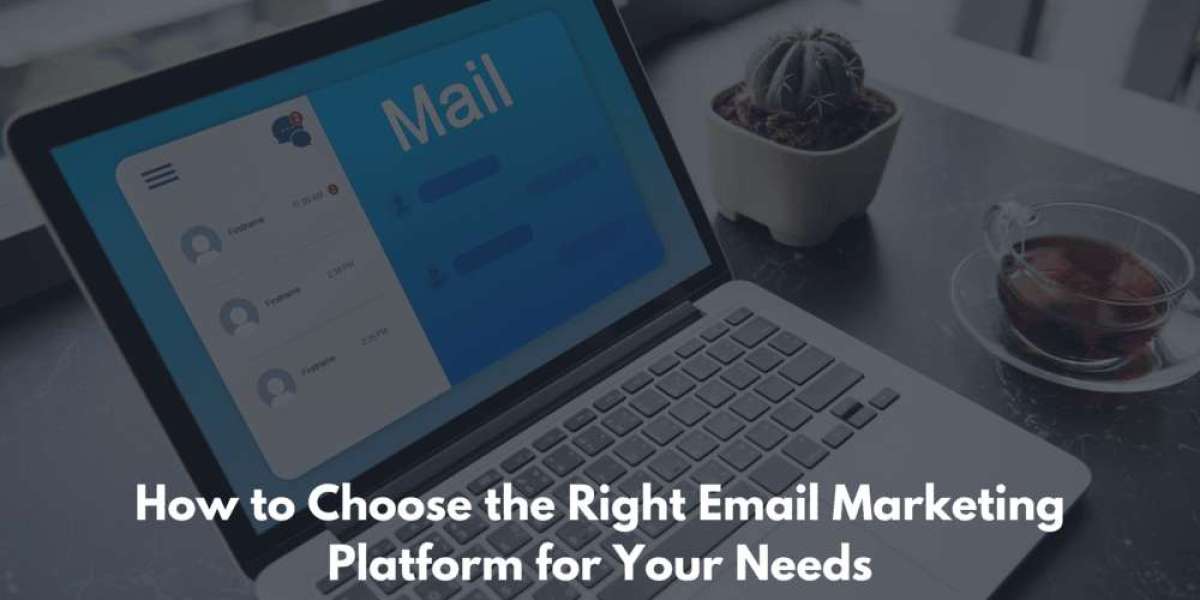In today's digital marketing landscape, email remains a powerful tool for nurturing leads, driving sales, and fostering brand loyalty. But with a plethora of email marketing platforms (EMPs) vying for your attention, selecting the right one can feel overwhelming. This is where martech (marketing technology) comes in. Understanding your business needs and aligning them with the functionalities offered by different EMPs is crucial for maximizing your email marketing ROI.
This blog serves as your guide to navigating the world of email marketing platforms, helping you choose the one that seamlessly integrates with your existing martech stack and propels your marketing efforts forward.
Step 1: Assess Your Needs
Before diving into platform comparisons, take a step back and assess your specific requirements. Here are some key questions to consider:
- List size and growth projections: How many email subscribers do you currently have? How quickly do you anticipate your list growing?
- Campaign goals: What are you hoping to achieve with your email marketing efforts? Do you want to generate leads, nurture existing ones, drive sales, or promote brand awareness?
- Email frequency and complexity: How often will you be sending emails? What level of complexity do your campaigns require (e.g., basic newsletters vs. personalized automated workflows)?
- Features and functionalities: Do you need features like email segmentation, A/B testing, landing page creation, or marketing automation?
- Integrations: Does the platform integrate with your existing CRM, marketing automation software, or e-commerce platform?
- Budget: How much are you willing to spend on an email marketing platform?
Step 2: Explore Your Options
Many EMPs cater to a wide range of business needs. Here's a breakdown of some popular options to get you started:
- Mailchimp: A user-friendly platform ideal for beginners, offering basic email marketing features, list management tools, and pre-designed templates.
- Constant Contact: Another beginner-friendly option with a strong focus on email deliverability and analytics.
- ActiveCampaign: A powerful platform offering marketing automation capabilities, lead scoring, and CRM functionalities, well-suited for businesses looking to nurture leads and personalize customer journeys.
- Drip: An e-commerce marketing platform with features specific to online stores, such as abandoned cart campaigns and product recommendations.
- Klaviyo: Another e-commerce focused platform known for its powerful segmentation and personalization features.
- HubSpot: A comprehensive marketing suite that includes email marketing alongside CRM, marketing automation, and content management tools.
Step 3: Prioritize Key Features
While all EMPs offer core functionalities like email creation, list management, and reporting, some excel in specific areas. Here are some key features to consider based on your needs:
- Drag-and-drop email builder: Look for a user-friendly interface that allows you to design professional-looking emails without coding knowledge.
- Email automation: Automated email workflows can save you time and effort by sending targeted emails based on subscriber behavior.
- Segmentation and personalization: The ability to segment your audience and personalize email content based on subscriber preferences can significantly improve engagement.
- A/B testing: Test different email subject lines, content offers, and CTAs to optimize campaign performance.
- Landing page creation: Some EMPs allow you to create landing pages directly within the platform, streamlining your marketing efforts.
- Integrations: Integrations with your existing martech stack ensure seamless data flow and a unified customer experience.
- Detailed analytics and reporting: Track key metrics like open rates, click-through rates, and unsubscribe rates to measure your campaign effectiveness and make data-driven decisions.
Step 4: Leverage Tech Publications and Free Trials
Tech publications often publish reviews and comparisons of different EMPs. Reading these articles can provide valuable insights into the strengths and weaknesses of various platforms. Additionally, most EMPs offer free trials, allowing you to explore the platform's interface, test its functionalities, and gauge its user-friendliness before committing to a paid plan.
Choosing the Right Fit: A Strategic Decision
Selecting the right email marketing platform is a strategic decision that can significantly impact your marketing ROI. By carefully assessing your needs, researching available options, and prioritizing key features, you can choose a platform that empowers you to achieve your email marketing goals and cultivate stronger customer relationships. Remember, the "best" EMP doesn't exist; the ideal platform is the one that seamlessly integrates with your existing workflows, scales with your business growth, and empowers you to execute data-driven email marketing campaigns.








